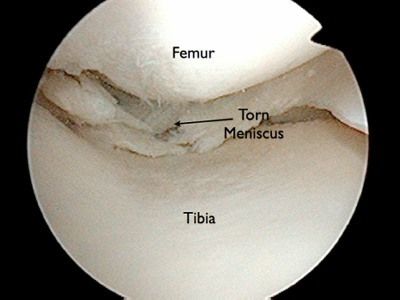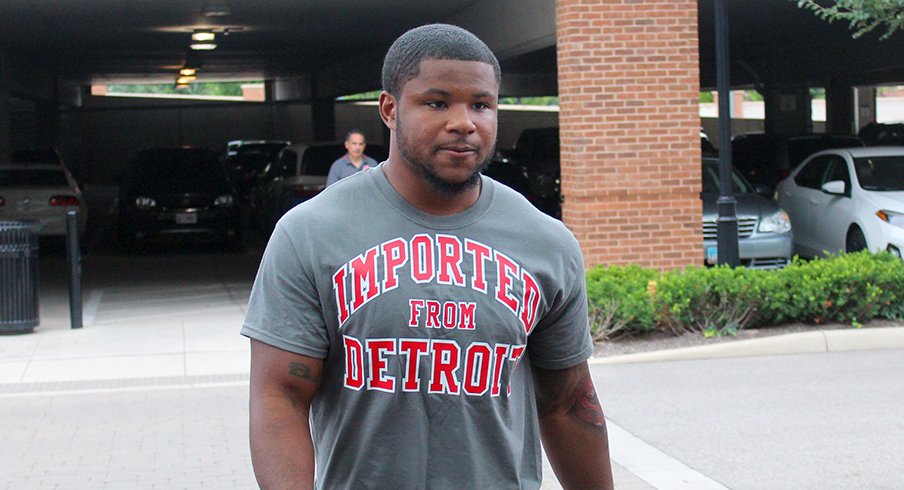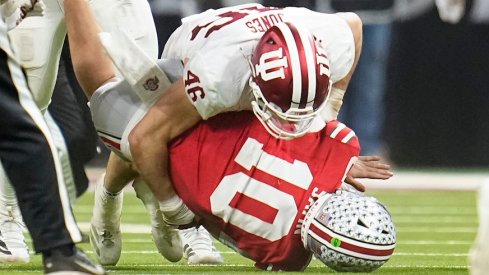Ohio State suffered its first major injury of fall camp Monday when freshman running back Mike Weber suffered a torn meniscus. He is scheduled for surgery Tuesday morning.
Anatomy
The meniscus is a rubbery cushion of cartilage within the knee joint which acts as a shock absorber between the thighbone (femur) and shinbone (tibia). Without the meniscus sitting in between those two bones, they would be crunching against each other with every step.

Injury
It’s common for the meniscus to wear down gradually with time, and the changes seen with age and overuse are referred to as degenerative meniscus tears.
However, the meniscus cartilage can also tear suddenly, referred to as traumatic meniscus tears. A common mechanism of a traumatic meniscus tear is twisting of the knee while the foot is firmly planted. This can happen with or without contact. That movement alone forcefully grinds the thighbone on top of the shinbone and damages the meniscal cushion in the process.
Symptoms: When a piece of the meniscus cartilage gets torn, it can flap up on top of itself. Imagine cutting a tear into a piece of rubber. The torn piece is flimsy. This creates problems within the knee joint space, because the loose cartilage can catch itself on other joint structures with movement.
This phenomenon is what causes some of the classic symptoms of meniscus tears: a catching sensation, locking of the knee, buckling of the knee, perceiving instability (feeling like the knee will give out), and inability to completely straighten the knee.
With the loose piece of cartilage acting up in the joint space, swelling occurs. A lot of inflammation tries to fit its way into the tight space of the knee, which can be excruciatingly painful.
Management
Treatment for meniscus tears varies based on the individual injury and the activity level of the patient. There are non-surgical options (rest, ice, physical therapy) and surgical options.
Weber is having an operation. There are two types of operations available to alleviate the symptoms of meniscus tears. They are both performed arthroscopically, meaning with a tiny camera inserted into the knee joint to visualize the damaged structures and intervene without needing to completely open up the knee.
The first surgical option is a “clean-up” and meniscal repair. Once the surgeon enters the joint space, the damaged cartilage is identified; it literally looks like crab meat all torn up. Some of the small tears are shaved away, and large tears are stitched up. Rehab time for this procedure is about three months.
The second surgical option is called a meniscectomy, which means completely getting rid of the affected area of cartilage. The damaged cartilage is cut away from the rest of the meniscus with small surgical scissors, leaving an empty space within the cushion. Rehab time for a meniscectomy is about three to four weeks. It’s a much shorter recovery time.

Weber's Prognosis
Why would anyone have a meniscus repair and be out for three months when a meniscectomy has such a shorter recovery? The answer depends on many variables. For Weber, a highly-functioning athlete with a drive to return to play as soon as possible, a meniscectomy will give him the most out of this season.
Further, the specific shape and size of Weber’s tear may be more responsive to removal of the affected area rather than to an attempt to suture it back together. Some tears will not heal well with stitching, and the repair attempt would only create more issues for the patient down the road. All of these factors are considered by the surgeon and discussed with the patient before a treatment decision is made.
We wish Weber a successful surgery, a restful recovery, and an effective rehabilitation, and we look forward to seeing him take the field with healthy knees this fall. With a successful surgery and an athlete dedicated to his physical therapy, there's no reason Weber can't come back just as strong with full, pain-free mobility. There’s never an opportune time for an injury to occur, but with it happening this early in the season, we certainly don’t mind the prognosis of having such a promising RB strong and ready for game time.
REFERENCES
- Salzler, Matthew J., et al. "Complications after arthroscopic knee surgery." The American journal of sports medicine 42.2 (2014): 292-296.
- Weiss, William M., and Don Johnson. "Update on meniscus debridement and resection." The journal of knee surgery 27.6 (2014): 413-422.


